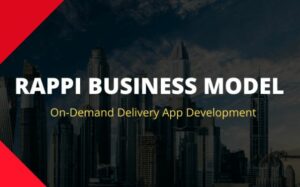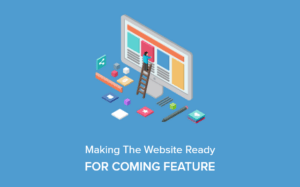The popularity of the online marketplace is increasing. In 2018, the total e-purchase amount was $2.8 trillion, and by 2021, the amount will rise to $4.8 trillion, according to Statista. Every minute, people buy 4000+ products from the Amazon website, according to a report by Amazon in 2019. Do you wish to create a marketplace like Amazon? Here is the complete guide for you.
- From Garage to success – Amazon in 20 years
- Why is Amazon so popular?
- How does Amazon multi-vendor work?
- How does Amazon make money?
- How to attract users to a website like Amazon?
- How to build a multi-vendor marketplace like Amazon?
- Core features of Amazon marketplace
- Cost to develop a multi-vendor marketplace like Amazon
- How Esferasoft’s Ready to Launch multi-vendor solution can help you?
From Garage to success – Amazon in 20 years
Amazon is another successful business that started in a garage and shot up to become the world’s most recognizable brands. It is the second-largest brand (right after Apple). Amazon started as an online book shop, and for three years, it sold books in different states of America. Later, the brand started to cover other genres of products, from herbal supplement products to electronics. In 2004, Amazon grew out of America and started to cover other parts of the world, including China. Today, the brand has separate websites for different countries like Australia, India, Turkey, Germany, and others. In 2007, the brand introduced Kindle, its own product.
Amazon acquired Kiva Systems in 2012 and started automation to improve its efficiency. Thereby, faster delivery of products became plausible. Today, the brand has more than 600,000 employees and owns 250 million sq. feet of properties to offer an instant shopping experience to the customers, all in just a few clicks.
Why is Amazon so popular?
Primary principles of Amazon
Amazon always puts customers as the priority. The brand has four primary principles
- Customer-focused not competitor-focused
- Invention-oriented
- Operational excellence
- Long-term big-picture view
So, if you plan to build a portal like Amazon, you need to know what makes them special. Yes, customer experience is the primary factor that puts Amazon up in the list, but how is the brand able to offer unparalleled customer experience?
Web design
The website is not too trendy or filled with animated effects. Every element on the page focuses on providing optimal value to every type of customer, whether they are window shopping, buying in bulk, or a single tissue box. Here are some of the few elements that make the web design of Amazon superior.
- HD videos and photos – All the products in the marketplace has at least one picture. The photographs and videos of the product are clear and of high-quality. Most of the brands offer photos from different angles, which is zoomable. Thus, there is no confusion about the product you are about to choose.
- Product info – Each product has a detailed description with specifications, features, overview, and more. The descriptions clearly mention what’s included in each product.
- Responsive design – The webpage has a responsive design suitable for devices of all screen sizes. 94% of the customers trust websites with a responsive design.
Payment options
Amazon is famous for its long list of payment options that are secure and simple. The platform offers the basic bank card options that include Visa, American Express, MasterCard, Diner Club, Discover, and JCB. Beyond these, one can use bank transfer, gift cards, mobile wallet payment methods. Recently, Amazon also included HAS and FSA cards for payment. For those who do not want to deal with e-money or cards, Amazon offers COD (cash on delivery) option.
How does Amazon multi-vendor work?
The marketplace is an online platform to sell products. In the case of a multi-vendor marketplace, the admin controls the marketplace, and the merchants can sell their products on the marketplace to the customers. Amazon does not own all the products displayed on the site. When you order a product, the order reaches the vendor selling the product, and the next stages of processing are the vendor’s responsibilities. Amazon takes care of maintaining the platform and processing orders of its own product like Kindle and others.
How does Amazon make money?
If the payment for the products reaches the vendors selling it, where is the profit for Amazon? Amazon uses more than one channel for generating cash flow.
Selling fee
The vendors have to choose either individual or professional package to sell products on Amazon. Small scale vendors selling less than forty items per month choose the individual plan, and the others pick the professional plan. Those under the individual plan have to pay $0.99 per item sold. Besides, they are charged a referral fee for each transaction. In the case of media items, a closing fee gets imposed. The vendors choosing the professional plan have to pay a monthly fee, referral fee, and shipping fee.
Shipping fee
Amazon handles the shipping process, and thus, a shipping fee is imposed on the vendor and the customers (in certain purchases) based on the genre of the product.
High-volume listing charge
Each vendor receives an Amazon Standard Identification Number (ASIN) for each product. For each ASIN, the seller pays $0.005 as a monthly fee. If the number of products goes beyond 100,000, the seller has to pay a listing charge.
Subscription fee
The customers who pick Amazon Prime have to pay a fixed charge as a yearly fee. Those with the subscription will receive multiple benefits like free 2-day shipping, unlimited movie streaming, special offers, and more.
Advertisement fee
The platform has a detailed advertisement policy. The vendors have to pay for the placement of ads and position of goods in the listing.
Amazon Kindle + Prime
Amazon Kindle purchase adds to the profit of Amazon. Those who purchase Kindle will receive free Prime membership for a month. Once the customers get used to the Prime membership’s advantages, they are more likely to buy the yearly service.
Amazon web services
The AWS (Amazon Web service) is the cloud service offered by Amazon. It is one of the most profitable channels of cash flow for the company. In 2019’s second quarter, AWS brought in $8.4 billion in profit.
How to attract users to a website like Amazon?
The main element that Amazon uses to attract users is the convenient features and monetization strategies. Both the sellers and buyers believe that Amazon is a profitable platform. Amazon needs vendors to be profitable, and vendors need Amazon to cover a larger customer base. They both need customers. How does Amazon attract users?
Attracting vendors
When Amazon started in 1995 as an online bookstore, it had almost zero competition. It improved its vendor base through marketing, word-of-mouth, and concentrating on niche markets during the early stage. Vendors would obviously prefer choosing Amazon since the customer traffic in Amazon is very high. So, how did Amazon attract its customers?
Attracting buyers
Amazon uses multiple marketing strategies continuously to attract buyers. It focuses both on retaining customers and also acquiring new.
Customer service
Amazon spends a considerable amount of resources on offering excellent customer service. The site also adopted automation in several areas to offer instant tracking, 24/7 customer service, product recommendation, and more.
A variety of product
Customers find Amazon to be a one-stop destination for the entire family. One can purchase everything from a recliner to a garlic press in one cart.
Optimized purchase process
Amazon aims to make a one-click purchase possible. The number of steps from choosing a product to buying it is very less. The simple checkout process with detailed instructions allows customers, even first-time users, to order conveniently.
Customer loyalty
The prime membership, customized personal email advertisement, abandoned cart indication, and variety of shipping options provide Amazon a large loyal customer base.
Price factor
Since a number of vendors sell on the same platform, it becomes easier for the customers to compare and choose the cost-effective one. Moreover, Amazon offers discounts and offers now and then for customers.
How to build a multi-vendor marketplace like Amazon?
Are you planning to invest in the retail business? It is a good investment plan, as according to NASDAQ, by 2040, more than 95% of the purchases would happen via e-commerce platforms. You would need a reliable platform, like Amazon. Here is how to build a marketplace like Amazon.
Technical stack
The first step is to choose the technology stack for the website. The website’s performance, stability, and response time depend on the programming tools you would pick. All these factors have a strong correlation with the user experience. Remember to choose the stack that would reduce the time taken for the creation and be suitable for your budget. For simplicity, programmers usually classify the technology into client-side and server-side. The client side revolves around the elements that the customer or vendor utilizes. The server side includes all the back-end operations.
Client-side/front-end technology
- The physical appearance of the webpage and the content require CSS (Cascading style sheets) and HTML (hypertext markup language)
- The Javascript allows the users to interact on the platform. Amazon uses high-end technology, like React.js.
Server-side/back-end technology
- The basic logic of the platform requires programming language and framework. The commonly used methods are Ruby on Rails and Ruby. It is possible to build a secure, fast-loading, and scalable platform with this technology.
- If you are looking for automation frameworks for testing, the best options are Capybara and RSpec.
- For storing and managing data, you need a database. The most-opted options are PostgreSQL for data storage, AWS, and Redis.
- For managing requests, you need a server. Puma and Nginx combine well with Ruby on Rails.
Core features of Amazon marketplace
Amazon marketplace does not revolve around just the ‘add to cart’ and ‘pay’ buttons. Several primary and supporting features are essential for the basic functioning of a marketplace. If you are looking for creating a marketplace like Amazon, here are the basic features that are imperative for the platform’s normal functioning.
Profile
Profile creation helps buyers and vendors store their primary information like address, payment options, purchase history/product listing, etc. The profile allows the users to log into their account using the credentials.
Admin panel
The admin panel stands as a dashboard for controlling the entire functionalities. The platform’s owner or manager can alter vendors and buyers’ settings and features, like shipping fees, listings, categories, filters, and more.
Search
The platform should have an advanced search option that allows customers to search within a genre or throughout the inventory. This process makes the navigation easier and reduces the time consumed for purchases.
The listing page
This feature allows the customers to view the products with the picture, comprehensive description, and price.
Cart
The cart feature allows the customers to buy multiple products from different vendors in one purchase. It also allows the customers to add up or reduce the quantity in the cart and delete them. The cart should include details about the price, shipping cost, estimate time, payment method, and more.
Payment gateway
The payment gateway should be secure and must allow multiple options for payment. It should have features to make a payment type as the default method.
Reviews and rating
The buyers should have the freedom to express their opinion about the product they purchased. They should be able to provide written comments, star ratings, and upload photos and videos. Other buyers should be able to see those reviews before purchasing the product.
Wishlist
This feature allows the customers to select and save the products they wish to buy later. The feature also includes sharing options that allow the user to share it with selected members.
Notification
The seller and buyer should receive notification about the order, processing, delivery, out-of-stock, etc.
Shipping
Shipping is a back-end feature that the customer can select from a set of options.
Cost to develop a multi-vendor marketplace like Amazon
In general, if you are looking for a ready-made script for a marketplace, you can find offers from $999. Since you are choosing a ready-to-launch option, your time-to-market will be very low, and you would be reducing the complexity of the whole process by multiple folds.
If you are looking for a basic e-commerce website, you can hire an independent contractor or hire e-commerce development companies. The cost of such a product would be $1,000 – $10,000. If you wish to pay hourly, it would be around $100 to $200. For a moderate feature-filled website with basic and common advanced features, the price range would be between $7,000 and $150,000. If you plan to launch a website with specific features, customized settings, and unique elements, the average cost would be $500,000.
Cost of user interface
The user interface gives a unique look to your website. It should be easily navigable, responsive, customizable, and faster to load. Make sure to allow provisions for widgets and advertisements. The cost of this development depends on the number of unique screens required. For a multi-vendor marketplace, the cost should be between $10 and $40 per hour if you choose a freelancer. If you prefer a reliable and established service provider, the cost could be between $60 and $200 per hour.
Cost of the development platform
The most commonly sought platform is Magneto. More than two hundred thousand websites use Magneto. There are also other options in the market. The cost of this element depends on the vendor you prefer for your website.
Cost of payment gateway integration
Many vendors offer free payment gateway. However, if you wish to have superior security features and multiple payment methods, it is important to choose a reliable one. It would add up to the cost of the overall development of the site.
Other cost factors to consider are
- Cost of customization like themes
- Cost of plug-ins and extensions
- Cost of research, brainstorming, and storyboarding – this includes market research, customer survey, and others
- Cost of security features – like security certification, backups, and others
It is possible to cut some corners and choose cheaper options to reduce the overall cost of developing a website. If you prefer to do so, remember that an ill-developed website can increase the cost of maintenance by several folds. Moreover, during troubleshooting, the website downtime costs you in terms of website reputation, lost customer lifetime value, and more. According to Google, if your site is down, 61% of the mobile users never visit your site again, and 40% would switch to your competitors. Can you afford to lose 61% of your customer base? If not, it is wise to choose a reliable multi-vendor marketplace development service provider.
How Esferasoft’s Ready to Launch multi-vendor solution can help you?
If you plan to choose a built-from-scratch platform, you would be spending too much time and resources on the user interface, front-end programming, back-end modules, payment gateway programming and integration, quality assurance, and more. What if you have a ready-to-launch multi-vendor solution with all these steps already taken care of by the experts?
Beyond these, the scripts allow maximum customization to make your website look unique. According to OptimMonster, online platforms lost $756 billion in 2018 because of poor customization. You can go instantly live to the market by reducing the time-to-market factor, thereby reducing the process’s overall cost. Can a ready-to-launch script allow a business to create a solution like Amazon? Some random third-grade script would not suffice. It would be best if you had a solution with high-end features and a support system like Esferasoft.
Advantages of choosing Esferasoft ready-to-launch solution
Although it is a ready-to-launch solution, it is not a package out of the shelves. Share your unique requirements with the experts, and they will pick the right solution for you. The key features of a ready-to-launch solution from Esferasoft are
- Extensive dashboard for easy management
- Product export and import features
- Sellers management options
- Inventory report
- Customer management features
- Daily deals
- Multi-currency customization
- Multi-language friendly
- Shipping management features
- SEO management
- Mobile log-in and OTP
- Ticket management
- Staff management features
- Business and front-end settings
How is Esferasoft different from other ready-to-launch solutions?
- The first difference is the one-size-fits-all approach handled by other brands. Esferasoft offers unique solutions based on your requirements.
- Advanced features are available even in the ready-to-launch solutions like product bulk upload, vendor shop settings, digital product features, advanced statistic reports, monthly sales highlight, ticket support, and others.
- On the customers’ side, they can enjoy guest checkout, simple and fast checkout process, smart cart system, social media log-in, comparison of products, suggestive search, and customer review options.
- Laravel-based back-end, Kotlin, and Swift based Apps and optimized UX features.
- Customized platforms for different genres like electronics, jewelry, grocery, fashion, furniture, apparel, real estate, etc.
Experience
Esferasoft has experience in creating such platforms for multiple clients in different genres. You can check the stores launched by Esferasoft to understand the quality and uniqueness of the solution. Check out the testimonial page to understand the experience of their previous customers.
Transparency
If you partner with Esferasoft, you will be a part of every stage of your platform development. Every idea and suggestion of yours would be a part of their development, and you can overview the process anytime you want. A separate team will be handling your product, and thus, it would have all the advantages of having an in-house development team, without the complexity and overheads that come with it. The cost of completely rebuilding your site and regaining the lost reputation is too high and almost impossible. Thus, it is essential to pick the right service provider to start with the process. Learn how the platform developer can add value to your business idea and pick the one that offers unique, scalable, and secure solutions for your requirements.
Conclusion
Amazon is a successful and growing platform for online purchases. If you wish to create a business in the same genre as Amazon, you ought to offer similar if not superior features, customer experience, and advantages to both the vendors and the end-buyers. You need a reliable platform, to begin with, advertising, and attracting your customers. Remember that Amazon’s success did not happen over a fortnight. It took 25 years of continuous delivery of the experience. Where should you begin? As said before, begin with a reliable platform, and for that, you need a reliable development service provider like Esferasoft. Is your business idea ready? Get connected with experts at Esferasoft and get started with the development process.










